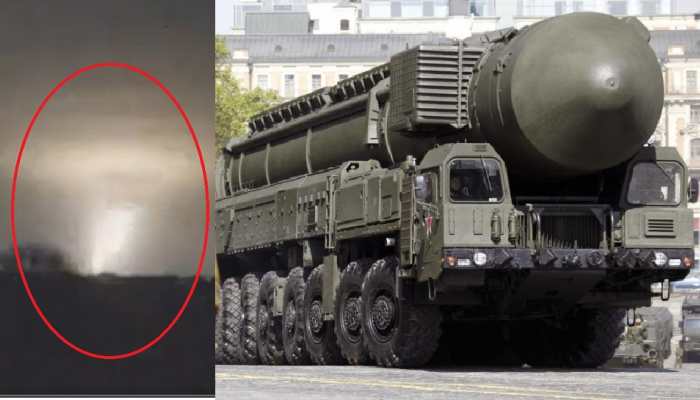What Is ICBM RS-26 Rubezh That Russia Launched On Ukraine’s Dnipro In A Warning To NATO?
Russia ICBM Strike On Ukraine: The strike occurred on November 21, hours after marking 1,000 days since Russia’s 2022 invasion of Ukraine.
Trending Photos
) Representative Image
Representative Image ICBM Strike: In a significant escalation of the ongoing war, Russia launched an intercontinental ballistic missile (ICBM), the RS-26 "Rubezh," at the Ukrainian city of Dnipro. The attack, carried out from Astrakhan in southern Russia at 5 a.m. local time, marks the first known use of an ICBM in the conflict, signalling a chilling warning to NATO and Ukraine alike.
The strike occurred on November 21, hours after marking 1,000 days since Russia’s 2022 invasion of Ukraine. While the warheads were reportedly non-nuclear, the deployment of such a high-capability missile underscores the deepening intensity of the conflict, which shows no signs of resolution. The stunning videos of the attack has gone viral on social media.
BREAKING: Incredible video footage shows Russian ICBM missile strikes against Dnipro in east central Ukraine.
This is the first time in human history that ICBM’s have been used in war.
We are inching closer to WWIII by the day. pic.twitter.com/FUgh2tbkUN — DK (@1Nicdar) November 21, 2024
A Response to Ukraine’s Long-Range Strikes
The missile strike follows Ukraine’s use of advanced long-range weapons, including U.K.-supplied Storm Shadow missiles and U.S.-made ATACMS, to target Russian territory. Russia’s Foreign Minister Sergei Lavrov condemned these actions, warning of further escalation and reiterating President Vladimir Putin’s nuclear warnings. Lavrov also highlighted Russia’s updated nuclear doctrine, raising fears of broader implications.
What Is the RS-26 "Rubezh"?
The RS-26 "Rubezh" is a mobile-ground ballistic missile system derived from the RS-24 "Yars," itself a modernized version of the older Soviet Topol-M system. First tested in 2012, the RS-26 is essentially a shorter version of the RS-24 with one fewer stage. With a range of 5,000–6,000 kilometers, the RS-26 has the capability to target Europe, the U.S., and even the Asia-Pacific region.
Designed primarily to deliver nuclear warheads, the RS-26 carries a massive payload of 1.5 tons, making it a formidable weapon even with conventional warheads. The missile follows a high ballistic trajectory, complicating interception and heightening its threat level.
Legacy of the RSD-10 "Pioneer"
The RS-26 is considered a modern iteration of the Soviet RSD-10 "Pioneer" missile, which was dismantled under the Intermediate-Range Nuclear Forces (INF) Treaty in the 1990s. However, Russia resumed production of these missiles under President Putin, a move seen as a violation of the now-defunct treaty.
A Message to NATO
By deploying the RS-26 in a conventional strike, Russia is sending a clear signal to NATO and its allies about the stakes in Ukraine. The missile’s range and capabilities underline its potential as a deterrent against any further Western intervention. With its ability to carry nuclear warheads and strike vast distances, the RS-26 represents a grim reminder of how the conflict could escalate further.
Stay informed on all the latest news, real-time breaking news updates, and follow all the important headlines in india news and world News on Zee News.
Live Tv







)
)
)
)
)
)
)
)
)
)
